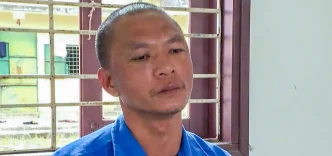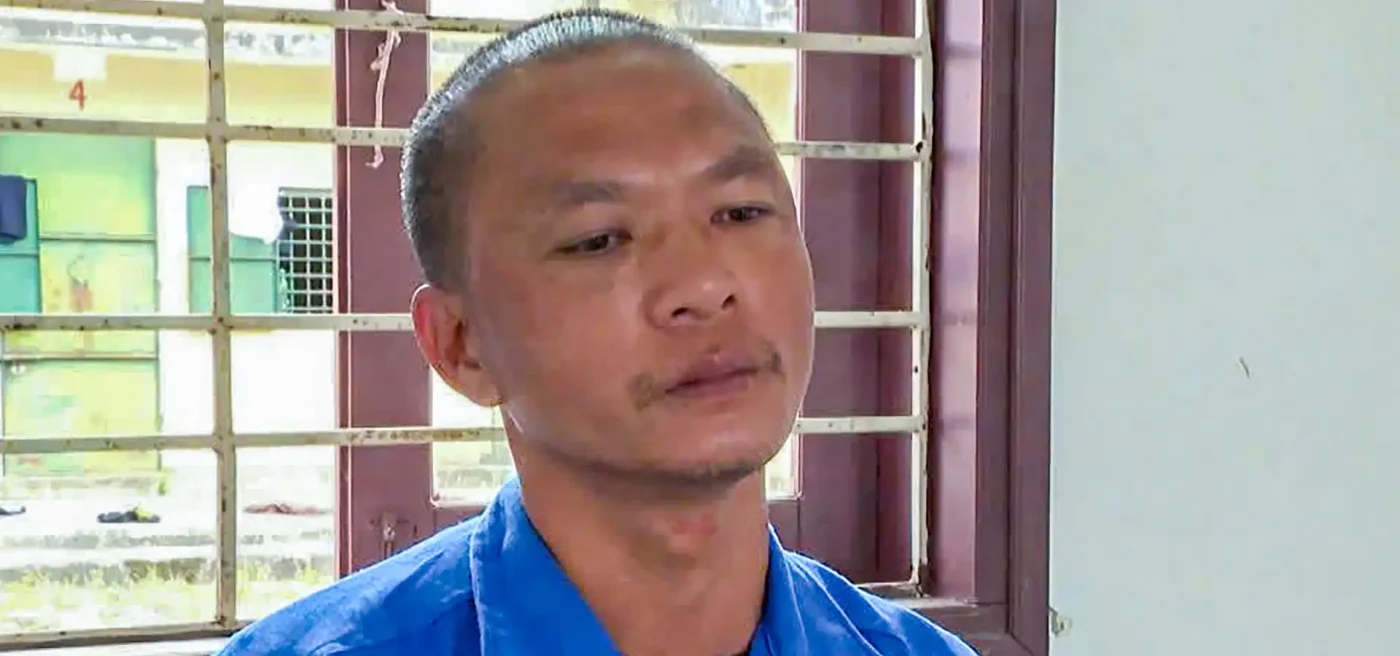A shocking incident at Thái Hòa Palace in the Imperial City of Huế has left a Vietnamese national treasure damaged and sparked widespread outrage. On May 24, 2025, a male tourist, identified as Hồ Văn Phương Tâm, trespassed into a restricted area of the historic site, climbed onto the imperial throne, and caused significant physical harm to the artefact. The event, captured on video by another visitor and shared widely online, has raised urgent questions about security at Vietnam’s cultural heritage sites and the protection of irreplaceable relics.
A National Treasure Violated
The incident unfolded shortly after noon on Saturday at Thái Hòa Palace, the ceremonial heart of the Imperial City, where Nguyễn dynasty emperors once held court and conducted state affairs. The throne, recognized as a National Treasure of Vietnam in 2015, sits at the center of the palace and symbolizes centuries of imperial history. According to the Centre for the Conservation of Huế Monuments, Tâm, a 42-year-old man originally from Huế but currently based in Ho Chi Minh City, purchased an entrance ticket before bypassing security barriers and climbing onto the restricted artefact.
Initial reports from security personnel and surveillance footage indicate that Tâm exhibited erratic behavior, shouting incoherently and showing signs of severe intoxication. In the process, he broke the left armrest of the throne, causing damage that experts fear may be irreparable. Due to low visitor numbers at the time, the incident went unnoticed for several minutes until security intervened. By then, the harm had already been done.
A tourist captured the scene on video, which quickly spread across social media platforms, igniting public anger. Many Vietnamese netizens expressed dismay at the desecration of a cultural icon, with some calling for harsher penalties for such acts. The Huế City police detained Tâm shortly after the incident and have launched a full investigation.
Background of the Suspect
Hồ Văn Phương Tâm’s personal history adds complexity to the case. Born in 1983 in Huế, he moved to Ho Chi Minh City with his family in the 1990s. He returned to Huế in mid-May 2025, staying briefly with relatives in Hương Long Ward before being forced to leave. Reports suggest he had been living rough in the weeks leading up to the incident. Court records from the People’s Court of Tân Bình District reveal that in July 2023, Tâm was ordered to undergo compulsory rehabilitation for drug abuse, raising questions about whether substance use or mental health issues may have contributed to his actions on May 24.
Authorities have struggled to obtain a formal statement from Tâm due to his unstable mental state, which includes delusions and incoherent speech. Huế City police are arranging a psychiatric assessment while collaborating with the Phú Xuân District People’s Procuracy to gather evidence and determine accountability. While speculation about his motives circulates online, officials have urged the public to await the results of the investigation before drawing conclusions.
Security Lapses Under Scrutiny
The incident has exposed potential vulnerabilities in the security protocols at the Imperial City, a UNESCO World Heritage Site that draws thousands of visitors annually. Surveillance footage revealed that two security guards were on duty at Thái Hòa Palace during the incident. One guard initially attempted to escort Tâm out of the palace after noticing his erratic behavior, but he managed to return unnoticed, slip past the barrier, and access the throne. Security staff then approached cautiously to avoid further damage, calling for reinforcements before subduing him and transferring him to Đông Ba Ward police.
Critics have questioned why the restricted area was not better protected, especially given the throne’s status as a national treasure. Some have pointed to understaffing or inadequate training as possible factors, though no official findings have been released. The Centre for the Conservation of Huế Monuments has announced plans to strengthen security measures across the site, with a particular focus on safeguarding artefacts. As an immediate response, the damaged throne has been relocated to a secure storage facility at the Royal Antiquities Museum, and a replica has been placed on display at Thái Hòa Palace for visitors.
Cultural and Historical Significance
Thái Hòa Palace holds immense cultural and historical value for Vietnam. Constructed in 1805 under Emperor Gia Long, it served as the primary venue for coronations, diplomatic receptions, and other significant state ceremonies during the Nguyễn dynasty, which ruled from 1802 to 1945. The imperial throne, believed to be the original, is not merely a piece of furniture but a symbol of Vietnam’s monarchical past and national identity. Its designation as a National Treasure underscores its importance as a tangible link to the country’s history.
The damage to the throne is particularly distressing given the ongoing efforts to preserve Vietnam’s cultural heritage amid rapid modernization and tourism pressures. The Imperial City of Huế, with its palaces, temples, and citadels, stands as a testament to the nation’s resilience and artistic achievement, but it faces constant challenges from environmental degradation, overcrowding, and now, isolated acts of vandalism. The People’s Committee of Huế City described the incident as “extremely rare and unprecedented,” reflecting the gravity of the situation.
Restoration Challenges and Costs
In the wake of the incident, the Centre for the Conservation of Huế Monuments has mobilized experts and artisans to assess the extent of the damage and develop a restoration plan. Early reports suggest that repairing the throne, particularly the broken armrest, will be a complex and costly endeavor. The artefact’s age and delicate materials require specialized techniques to ensure that any restoration preserves its historical authenticity. While exact figures have not been released, preliminary estimates indicate that the process could cost upwards of 100 million Vietnamese Dong (US$4,000), though this amount may rise depending on the findings of the assessment.
Funding for the restoration is expected to come from a combination of government allocations and donations from cultural preservation organizations. However, some experts caution that even with the best efforts, the throne may never fully regain its original state. This uncertainty has fueled calls for stricter regulations on visitor access to sensitive areas within heritage sites, as well as greater public education about the importance of protecting national treasures.
Broader Implications for Heritage Protection
The damage to the imperial throne is a stark reminder of the fragility of cultural heritage in an era of mass tourism. Vietnam has made significant strides in promoting its historical sites as tourist destinations, with Huế alone welcoming over 2 million visitors in 2024. While this influx boosts the local economy, it also places immense pressure on infrastructure and security systems designed to protect these sites. Incidents like the one involving Tâm highlight the need for a delicate balance between accessibility and preservation.
Globally, similar challenges have been documented at other UNESCO World Heritage Sites, from graffiti at Machu Picchu in Peru to unauthorized access at Angkor Wat in Cambodia. In Vietnam, the government has pledged to enhance protective measures, but implementation often lags due to budget constraints and bureaucratic hurdles. The Huế incident may serve as a catalyst for broader reforms, potentially including increased funding for security personnel, advanced surveillance technology, and public awareness campaigns.
Public Reaction and Official Response
The viral video of the incident has elicited a strong emotional response from the Vietnamese public, with many expressing grief over the damage to a cherished national symbol. On social media platforms, users have shared stories of their own visits to Thái Hòa Palace, emphasizing its role as a source of pride and connection to Vietnam’s past. Others have directed criticism at both Tâm and the authorities, questioning how such an act could occur in a heavily monitored site.
High-ranking officials have also weighed in on the matter. A Deputy Prime Minister has demanded swift action to address the incident, calling for accountability and improved safeguards at cultural sites across the country. The government’s response will likely be closely watched, as it could set a precedent for handling similar cases in the future. For now, the focus remains on repairing the throne and ensuring that such a violation does not happen again.
As the investigation into Hồ Văn Phương Tâm’s actions continues, the incident at Thái Hòa Palace serves as a poignant reminder of the vulnerability of Vietnam’s cultural treasures. Whether through enhanced security or greater public vigilance, the path forward must prioritize the protection of history for generations to come.















